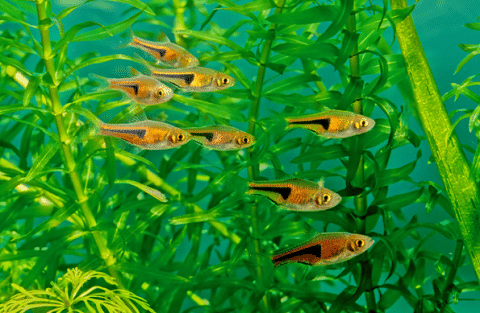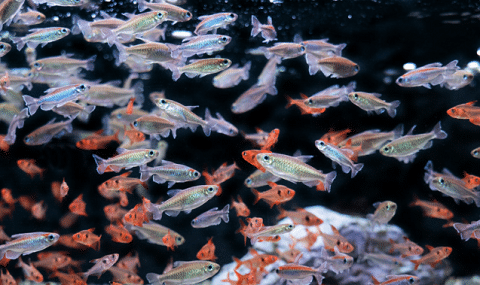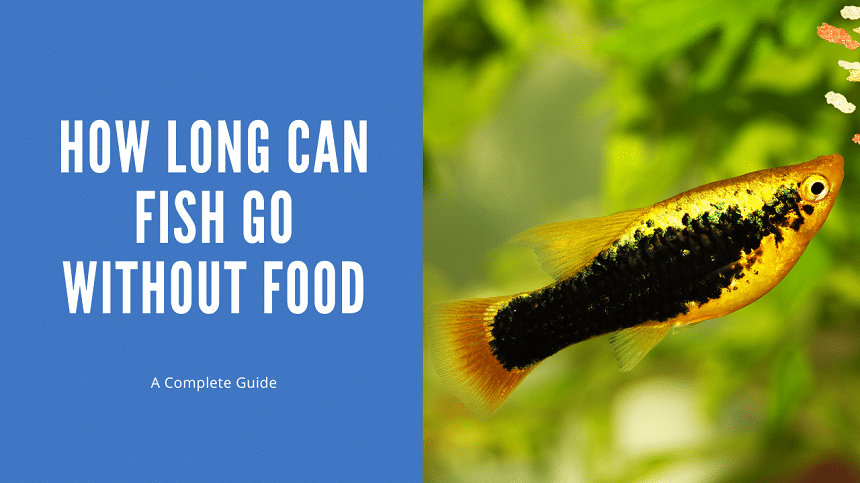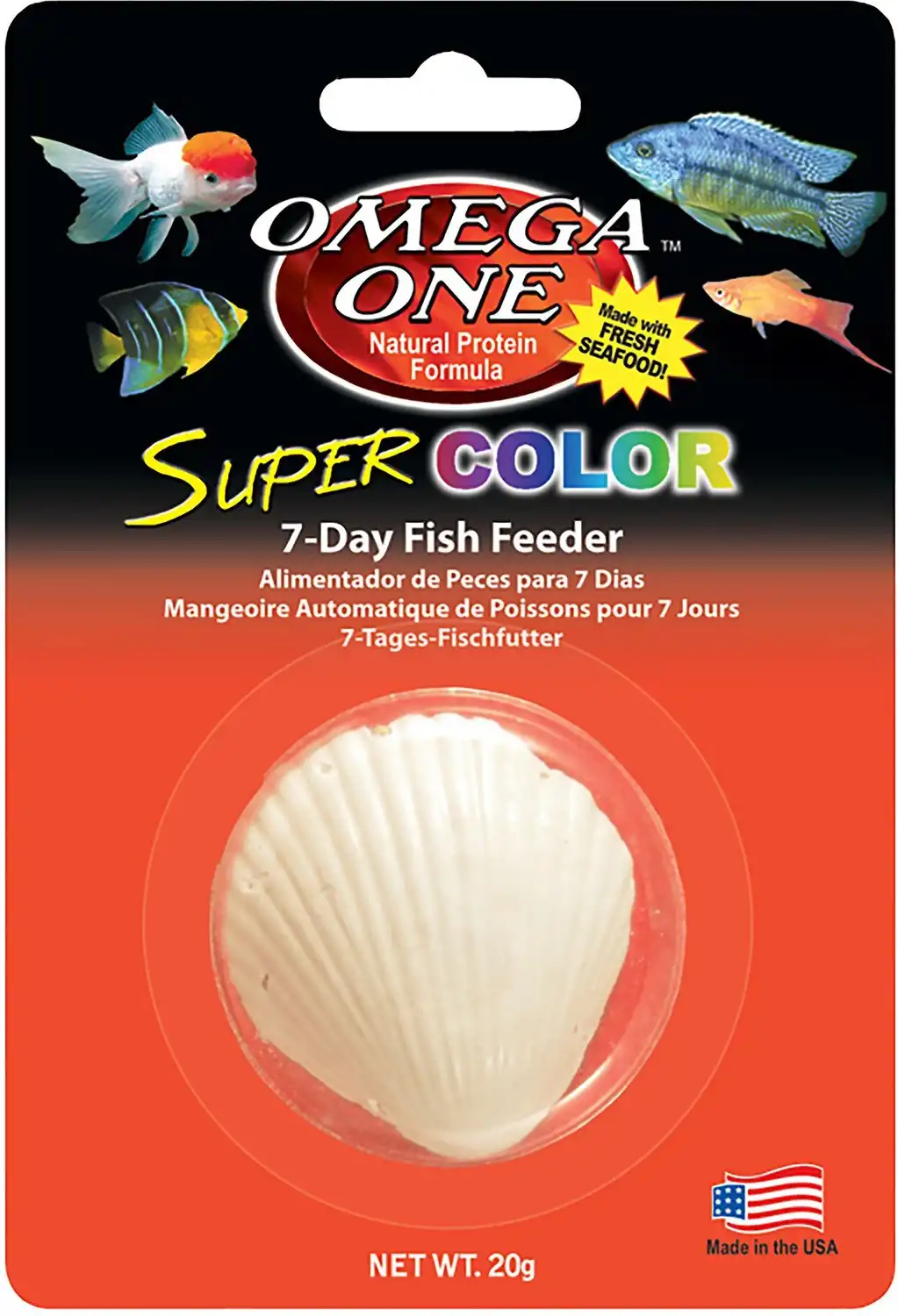Thank you for visiting! By the way… any links on this page that lead to products on Amazon and other stores/partners are affiliate links Aquarium Store Depot earns a commission if you make a purchase.
When fish owners are planning a vacation or an extended period away from home, they may be wondering how long their aquatic pets can go without food. Knowing the different factors such as species, age, and size which influence feeding frequency is crucial to understanding when fasting is okay for your finned friends. This guide will provide insight on this topic in order to ensure that you know what steps need to be taken before leaving them alone for any length of time.
Key Takeaways
- In general, aquarium fish can survive without food for anywhere from 3 days to 2 months. It will depend on the fish species
- Fasting is a beneficial practice for the health of individual fish, but juveniles should not fast.
- Fish fasting duration depends on species and factors such as metabolism, activity levels, water temperature, and dietary preferences.
- Automatic feeders or fish sitters are reliable options to provide care while you’re away from home.
How Long Can Fish Go Without Food?
To answer this quickly for our readers, in general, fish can survive without food anywhere from 3 days to 2 months, depending on the species. There really isn’t a quick answer to this because fish species are so varied1.
Let’s look at a few examples. Cichlids are known for having long fasting periods after breeding. The female cichlid can go as long as a month during this mouth-brooding period while taking care of their young. That’s some parent dedication right there!
Other fish like Mandarian Gobies in saltwater tanks need to eat because they don’t have a stomach. These fish cannot fast at all and require fauna like copepods to feed off of them constantly.
As you can see, you can go extreme ends of the spectrum with fish! Let’s look into understanding why a fish would fast and the various factors that would determine how long your fish can go without food.
Understanding Fasting With Aquatic Animals

Fish fasting means withholding food from your fish for a certain period of time. Although it may seem counterproductive, going without daily meals can be beneficial to the fish, most species are capable of managing up to 7 days with no nutrition, but some types have greater endurance. Skipping one meal per week is necessary in order to prevent health issues such as constipation and swim bladder disease. Juvenile fish must eat regularly, or else they won’t develop properly, resulting in malformations that stop them from flourishing.
The Importance of Fasting
Periodically fasting fish can contribute to their overall health and the well-being of an entire aquarium community. The process helps empty a fish’s digestive system, allowing it to more efficiently absorb nutrients from its food. This is particularly important for round-bodied species, which may otherwise experience difficulty swimming due to pressure on the swim bladder caused by excess consumption.
These fasts should last anywhere between 24 to 48 hours before introducing nutrient rich meals such as meat or fresh vegetables back into their diets. Avoiding overfeeding prevents water quality issues associated with increased waste production along with excessive nutrients that are likely to encourage the growth of algae and add stress to your fish from poor quality water.
Species-Specific Fasting Duration
For aquarium hobbyists, it is vital to understand that how long a certain species of fish can survive without food. How long largely varies and depends on its type. For example, betta fishes have the ability to go for about two weeks with no meals, whereas goldfishes may be able to stay alive up to a week or more without consuming any nourishment.
Such fasting periods are not ideal for sustaining their health in the long-term, but rather help them strengthen their digestive system and better get accustomed to their habitats as they grow older. Temperature levels existing in water as well as activity rates along with individual preferences when picking what kind of food also influence feeding frequency significantly within various types of creatures under consideration here, namely fish!
Fasting for Juveniles
The nutrition requirements of young fish are quite different than those of adult specimens. Young fish need multiple feeding daily to support their growth and development. Insufficiently feeding baby fish may lead to deformities, sickness, or even death due to malformations caused by a lack of proper nourishment.
It is important for fry’s diet to include live/frozen food sources as well as pellets, flakes, and vegetables in order to maintain good health until reaching maturity, after which fasting days can be introduced into the eating regime in order to optimize any potential future issues with digestion.
Factors Affecting Feeding Frequency

How long fish can survive without food is determined by numerous factors, such as their metabolism and activity levels, water temperature, and eating habits. All these criteria play an important role in deciding how often the fish need to feed or go for days without nourishment.
In this section, we shall examine every factor closely so that you have a better understanding of its influence on your fish’s feeding practices. The temperature of the tank water, along with metabolic rate and lifestyle, all figure heavily into determining just how much time a species can stay healthy while skipping meals.
Metabolism and Activity Levels
The energy requirements of smaller, more active fish differ greatly from larger ones that are slower in nature. The activity levels and metabolism of these creatures determine how often they need to be fed. The former requires two or three meals per day as their high-energy lifestyle calls for a large amount of food intake, which typically includes plankton and insect larvae.
On the other hand, bigger species require less frequent sustenance because they don’t expend too much energy due to their calmer existence. It is important to understand your pet’s metabolic rate so you can give them enough nourishment at regular intervals for optimal health conditions.
Water Temperature’s Role

The water temperature is a key factor in the frequency of fish feeding. When it gets too hot or cold, eating may decrease due to discomfort. Too much food at any temperature can cause harm to your fish, so be sure that you are adjusting their intake accordingly based on the temperature of the water.
Water should stay regulated according to what best suits each particular type of aquatic life living inside it. This includes regulating meal times by taking into consideration both temperate ranges as well as optimal meals given out daily per individual species.
Adequately providing nutritional needs correlated with changes in the atmosphere will assist not only towards maintaining appropriate body functions but also establishing overall well-being for all inhabitants (such as fish) found inhabiting these environments. Monitoring fluctuations occurring from warmer/cooler climates is part of being responsible ownership practices!
Dietary Preferences: Herbivores vs. Carnivores
Feeding frequency is an important factor to consider when caring for different types of fish. Carnivorous varieties require fewer meals than herbivores as they eat prey items that provide more concentrated energy sources. This means they can get by on a single meal, whereas their vegetarian counterparts need regular feedings since plant matter offers them less energy per mouthful.
Providing the correct diet based on what each type likes to consume helps keep your fish healthy and happy. Herbivore species should be offered live plants or algae so they always have access to low-energy food while carnivores need fresh, meaty fare like live or frozen prey instead in order to meet their nutritional needs properly.
Here are examples of these types of freshwater fish:
Herbivores
Carnivorous Fish
Size and Feeding Habits

Fish, regardless of size, need to be fed regularly. Larger fish with slow metabolism can go longer periods without being provided food when compared to smaller fish which possess faster metabolisms. This is because a bigger body requires fewer calories to function optimally, while the opposite applies in case of small sized fish and they require fewer calories, but more frequent feedings to function. Frequent feedings are necessary for those fishes that have high metabolic rates, but not so much for big fish with slow metrics.
Large Species And Slower Metabolism
When it comes to adult fish, which are of a larger size, their cells can have an influence on the oxygen availability and, as such cause them to have lower metabolic rates compared with smaller varieties. This then leads to less frequent feedings being necessary for large adults than those of more diminutive sizes – typically, many fish hobbyists suggest providing sustenance just once per day in order maintain optimal health in these bigger organisms.
The amount administered needs careful consideration also so not too much is consumed. Overfeeding may bring about issues like constipation or swim bladder disease while having ill-effects upon water quality within aquariums altogether. Appropriate feeding frequency is essential if we wish our larger aquatic friends remain healthy and happy!
Her are examples of large freshwater fish species
- Oscar Fish
- Jaguar Cichlid
- Large freshwater catfish
- Jack Dempsey
Small Species and Faster Metabolism
Small fish are characterized by having a higher metabolism, which requires them to consume food more frequently than their larger counterparts. This can be beneficial for the small fish, as it provides extra sources of nutrition that will help increase its chances of survival.

To meet these particular dietary needs with fast metabolisms, regular and light feedings must occur so they get what is needed nutritionally without overwhelming themselves or creating an imbalanced tank environment.
The frequency at which you should properly feed your smaller fish is critical in ensuring good health and well-being all around!
Examples Of Small Species
Special Considerations for Goldfish
Goldfish require particular diets compared to other fish species, that consist of approximately 30% protein and encompass various types of foods like live or frozen items, flakes, pellets as well as vegetables. Adult goldfish have a tendency to eat too much if not managed correctly, so fasting them once in a while is suggested for optimal health. By properly providing the right diet balance along with periodic fasts, you can guarantee your pet fish remains healthy and content.
Preparing Your Aquatic Pets for Your Absence

If you need to be away from home for any length of time, it is important that your fish get the food and care they require while you are gone. To help address this issue, there are several solutions available like automatic fish feeders, hiring a fish-sitter, or using specialized blocks of compressed nutrition specifically designed for fish.
To make sure that your underwater buddies have enough nourishment in your absence, these options should provide ideal choices when deciding what solution will best suit them.
Automatic fish feeders can easily dispense preset amounts at predetermined times so all nutritional needs are met on schedule. Sometimes leaving specific instructions with someone familiar with their dietary habits may be preferable, especially if more than one type of food is required such as flakes plus frozen treats!
Fish owners might even consider feeding items made up of specially formulated cubes that last longer because moisture evaporates slower.
Utilizing Automatic Feeders
An automatic fish feeder is a battery-operated device designed to establish set feeding schedules for your pet fish, even when you are not around. Bear in mind that some types of these tools can only disperse dry food such as flakes and pellets. To ensure the well being of your aquatic friends, it’s important to give them just enough nourishment – what they’re able to eat within three minutes should do the trick!
Best Auto Fish Feeder
Eheim's auto fish feeder is reliable, reasonably priced, and easy to use. A must for any busy fish keeper!
Having an automatic fish feeder ensures that your aquatic pets will get all their necessary nutrients while also keeping their environment clean by limiting excessive eating or waste, which might lead to poor water quality, ultimately affecting the health status of your gilled pals negatively. This piece of equipment could be quite a reliable solution for providing food during one’s absences from home.
Hiring Sitting Services (Or Finding A Friend)
Having a knowledgeable fish sitter can be incredibly advantageous for any aquarium owner who plans to go away from home for an extended period of time. You can hire a service to ensure your beloved aquatic creatures are fed, and their fish tank stays in good condition.
However, the best sitter is likely one you can find from a local aquarium society. These hobbyists are experienced and will know how to care for your pet fish. Facebook groups are useful to find local people as well. Spent time in these groups and get to know them. Find someone you trust so when the time comes you travel without worry.

Investing wisely on the right person guarantees that your fish will get optimal care when they need it most. Meaning that during holidays or business trips you’ll have one less thing to worry about, knowing perfectly well that your finned friends are being taken care of by an expert hand.
Considering Food Blocks
Fish food blocks are composed of protein derived from both animals and plants that gradually release nutrients into the water. These blocks can break down and leave uneaten food in an aquarium, which can result in poor water quality. Manufacturers have reduced nutritional values to counter this problem, so they must not be used without filtration systems or proper circulation of the water for them to dissolve well.
A feeding block that can be used when you are on vacation. Works for 7 days
Though fish food blocks may appear as a suitable way of feeding your pet fish when you’re away, it should still be employed with caution. The best option is making sure your fish tank has enough filtration plus adequant current. Otherwise, think about using automated feeders or getting assistance from someone who knows how to take care of fish (fish sitter).
Frequently Asked Questions
Can my fish go a week without food?
Adult aquarium fish can usually endure up to a week without food. Due to their low fat stores, younger fish may not last as long. For this reason, it is crucial that you consult the pet shop prior if planning an extended leave of absence from home. When departing for more than several days, make sure your aquatic friends have enough food beforehand in order to maintain healthy conditions while away.
How many days can a fish go without eating?
Fish are relatively hardy, and they can endure a few days without nourishment. For them to stay healthy, it is recommended that aquarium fish should be fed at least once every two or three days. Adult healthy fish could manage up to fortnight with no food intake. On the other hand, young ones don’t have enough fat reserves as adults do, so providing them nutrition in intervals of 2-3 days will help maintain their health is much better.
What happens if you don’t feed your fish for 2 days?
Adult fish are able to exist without nutrition for two days due to the fat reserves in their bodies. Younger specimens require regular feeding or else they could have health complications arise from going too long without food. Thus it is important that you feed your fish on a routine basis so that both mature and young fish stay healthy.
How can I feed my fish while on vacation?
If you are going on vacation, it is vital to take steps in order to make sure your fish get the right amount of food. A great solution for this problem is a battery-operated automatic fish feeder – this allows you to pre-program meal times so that even while away from home, your aquatic friends will still be fed as usual.
Can fish survive 4 days without food?
Fish are capable of surviving for up to four days without food. It is crucial that they maintain a balanced diet and optimal health beforehand. Their habitat must meet all criteria necessary in order for them to survive during the period when no meals are consumed.
Even though fish can last several days with nothing nourishing them, providing regularly scheduled nutritious feedings alongside an ideal living space ensures that they stay healthy and happy.
Closing Thoughts
It is important for fish owners to understand the dietary needs, frequency of feedings, and preferences of their aquatic pets. This knowledge can be used to make sure that when you are away, your aquarium inhabitants receive proper care by taking into account factors such as size and metabolism rate along with activity levels in combination with water temperature. To ensure a healthy environment, an automated fish feeder or enlisting the services of a reliable sitter may be employed while food blocks also provide great nutrition sources which will keep your finned friends fit during absences.
- About the Author
- Latest Posts
I’m thrilled that you found Aquarium Store Depot! Here you’ll find information on fish, aquariums, and all things aquatics related. I’m a hobbyist (being doing this since I was 11) and here to help other hobbyists thrive with their aquariums! I adhere to a high quality Editorial Process and Review products with real life field usage and practical analysis.







